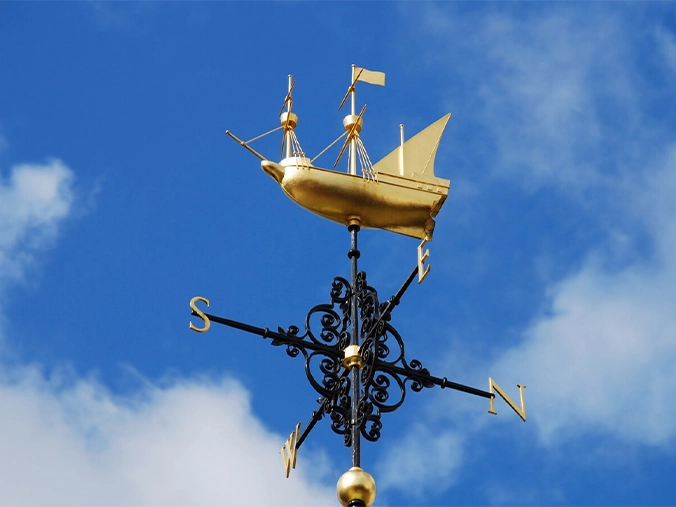What is a windmills for? This tool is used in many fields, especially in meteorology studies, by showing which direction the wind is blowing from. In nature-dependent industries such as agriculture, aviation and maritime, knowing the wind direction is critical for efficient and safe operations. It also helps students better understand weather phenomena through educational uses.
What is a windmills for question is not limited to learning the wind direction; it also plays an important role in solving some technical problems we encounter in daily life. Chimney weathervanes, especially on the roofs of buildings, are part of passive ventilation systems and are used to improve the air quality inside the house. By utilizing the direction and strength of the wind, this mechanism starts to rotate and expels the polluted air and smoke inside. This is both beneficial for health and makes the system work more efficiently.
Chimney windmills provide the following advantages:
As can be seen, windmills are not only a scientific or technical device, but also an environmentally compatible and practical solution that directly affects the quality of life. With its environmentally friendly structure and low maintenance requirements, it is an ideal tool for sustainable living.
What Do Windmills Do?
Windmills are simple but functional tools that work in harmony with nature, showing the direction and, in some models, the speed of the wind. These structures are usually placed in elevated areas – rooftops, towers, open fields – and show the direction the wind is blowing thanks to the rotating mechanism on top. Wind direction is particularly important in sectors such as agriculture, shipping, air transportation and energy production. To work efficiently in these sectors, environmental conditions need to be carefully monitored.
Wind roses are not only a technical measurement tool, but also an educational tool that encourages observation of nature. They are especially common in school gardens, science museums and environmental education projects. Thanks to their visible movement, they provide students with a concrete experience of wind direction and weather phenomena.
Windmills can be used for different purposes in various sectors. These purposes include the following:
Used to determine wind direction at stations that monitor weather events.
Spraying or irrigation can be planned according to the wind direction.
Knowledge of wind direction is vital for navigational safety.
The placement of wind turbines can be determined based on data from wind roses.
It can be used for aesthetic purposes in parks, gardens and balconies.

Advanced Wind Rose Systems
Today, in addition to conventional mechanical windmills, advanced digital and sensor-based models are also used. These models measure wind data instantaneously and transfer it to digital panels. Thus, long-term weather analysis can be made. Especially in smart agricultural systems, these data are integrated into automatic irrigation and spraying systems to increase production efficiency.
In conclusion, windmills play an important role in both traditional and modern applications. These systems, which work with natural data, have much wider areas of use when combined with technology.
What Does a Chimney Wind Rose Do?
Chimney wind roses are rotating head systems that are mounted at the top of the chimneys and rotate with the movement of the wind and expel the air inside. With the effect of low pressure created by the wind, a vacuum is created inside the chimney and the indoor air is drawn out naturally. This system provides passive ventilation without using electricity. It is especially vital in buildings where stoves and fireplaces are used because the backflow of smoke can cause carbon monoxide poisoning.
This mechanism is usually made of durable materials such as stainless steel, galvanized or aluminum. This makes it long-lasting and durable against external weather conditions. In addition, since its rotating head is automatically adjusted according to the wind direction, it can work with wind coming from all directions.
Chimney windmills provide advantages in many ways. Some of these advantages can be summarized as follows:
Chimney wind roses can be used in both residential and commercial buildings such as apartments, detached houses, restaurants, workshops, factories. These systems become even more important in areas where stoves are used, especially in winter. Since the risk of smoke backdraft increases in intense windy weather, chimney wind roses are the ideal solution to eliminate this risk.
It also helps to expel hot air and bad odors that occur indoors during the hot summer months. Therefore, it can be actively used not only during the heating season but also throughout the year. Chimneys supported by windmills offer a safer, healthier and more economical use.



